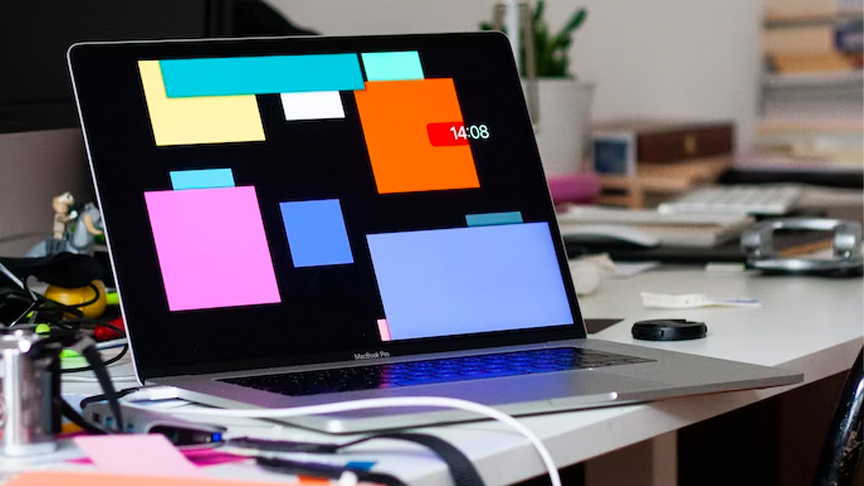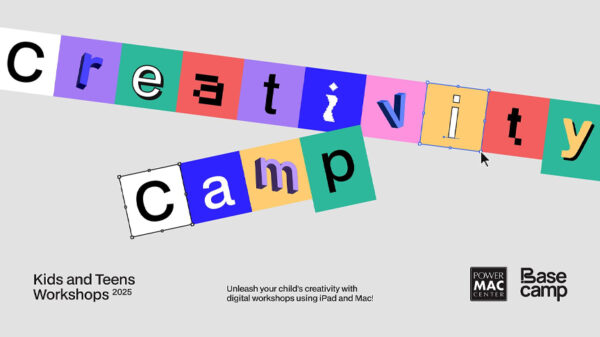Hybrid work is happening and it is here to stay.
The disruption brought about by the COVID-19 pandemic has accelerated the transformation of workforce and workplace, enabling hybrid working model, a combination of onsite and remote work, to be promoted and adopted, and likely emerge as the future of work.
This work concept is driven by an understanding that work is no longer where you go, but what you do, and the workplace is no longer inside the four walls of the corporate office – it is an ecosystem of employees working from anywhere. The new work model, which considers employees’ preference for flexibility in where and when they work, can help increase productivity and creativity.
A recent Cisco-commissioned Hybrid Work Study which was conducted to 28,000 employees in 37 countries, including the Philippines, showed that over three-quarter or 79% of employees in the Philippines believe that with hybrid working, the quality of work has improved. Besides, with this work model, a flexible way of working is possible. The time workers saved from commuting and more flexible work schedules enabled them to reinvest it to spend with family and friends that can improve relationships and personal well-being. This made workers happier, according to 92% of respondent-employees, which unsurprisingly drives a preference for hybrid work.

CHALLENGES
Notwithstanding these results, the movement to a hybrid work by businesses has introduced a set of challenges that must be addressed. According to Cisco Philippines managing director Zaza Nicart, delivering a seamless and secure work experience for employees working from anywhere is key. “Businesses need to leverage cross-architecture approach to IT and networking infrastructure to provide strong networking infrastructure that ensures always-on connectivity for people working anywhere; integrated collaboration tools that keep employees engaged, address employee well-being and ensure inclusivity is crucial; and businesses need to strengthen their cybersecurity posture to enable secure access and protect everything from the network to user endpoints to the cloud.”
Nicart also said that employee experience needs to be safe, inclusive, seamless, and consistent. It is crucial to give everyone a voice to achieve greater productivity and more engaged relationships, whether you are an introvert or extrovert, digital native or occasional user, frontline worker, or remote knowledge worker.
For Kaspersky’s general manager for Southeast Asia Yeo Siang Tiong, work conditions matter. “Consider which tasks you handle better in which environment. For example, the office may facilitate in-person conversations and meetings, whereas home may be the better choice for tasks that require concentration and focus (or maybe it’s quite the opposite). Determining which tasks are better suited for home and which for office can help you plan your week accordingly.”
Aside from this, Yeo Siang Tiong reminded that securing physical data posed another challenge. “Working from the office means you are on your employer’s local network so data protection is mostly IT’s job. But transporting your work – laptop, files, flash drives – between the office and home can place corporate data in danger from carelessness or even theft. If possible, keep separate devices for your home office and for actual office.”
Michelle Lasam, operations manager at Microsoft line of business, noted that it is also a challenge if companies implement hybrid work without proper planning as they will end up tying loose ends and issues along the way which will eventually end up more costly. She also cited that businesses should take into consideration their employees and their culture to be able to make hybrid working model work, and having the right tools to help improve the effectiveness of the model.

EMPLOYEE ENGAGEMENT
With employees consisting of those in the office, and remote or work from home, flexibility is essential in hybrid work in order to maintain high level of engagement or the emotional commitment an employee has to their organization and its goals.
In a study on the impact of the hybrid work on businesses and employees conducted by Kaspersky last year, it was found out that despite physically separated from their colleagues, 61% of employees haven’t noticed any difference when it comes to communicating with their teams or even feeling more connected. The study also showed remote work enhanced employees’ wellbeing even though there has been a significant increase in workload.
In the same report, Kaspersky found out that 67% report feeling comfortable working remotely or have not noticed an increase in anxiety due to overtime. The majority also say they don’t feel any more tired working at home, with a third or 36% even reporting having more energy at the end of the working day compared to before the move to remote working. According to Yeo Siang Tiong, the reason for this could be that employees were able to swap long commutes to pursue hobbies and interests and spend more time with loved ones, which has given them a more balanced lifestyle and improved their wellbeing and overall health.
But, while many are thriving under the remote work model, there are others who are struggling too, said Yeo Siang Tiong. “The combination of lockdown fatigue and increased hours spent at their desk at home, and the absence of live communication with colleagues is also among some of the frustrating factors that have led to some employees reporting tiredness, anxiety, and feeling of isolation.”
The Cisco study, on the other hand, found out that 60% of employees in the Philippines say they want a combination of a remote and in-office hybrid working model compared to a fully remote (38%) and fully in-office (3%) experience.
However, there is uncertainty over how different work styles might impact inclusion and engagement. Seven in 10 or 71% of Filipino respondents believe micromanaging behaviors had increased with hybrid and remote working. A lack of trust from managers that their employees can be productive has been a common thorn in their working experience. This presents an opportunity for businesses to rethink the employee experience, inclusive culture, employee well-being and trust and leadership, with technology as an enabler.
Nicart noted that businesses must leverage technology as a key enabler for greater employee engagement. “At Cisco, collaboration is not just a business but how we connect. Webex provides a smart, seamless, secure way for people across different work environments, languages, and technological proficiency to connect, with features such as noise cancellation, real-time transactions, and artificial intelligence (AI) speech enhancement, leveling the playing field for all meeting participants.”
Technology is not only changing our workplace but also our working patterns. During the pandemic, it showed us how work can be done, wherever you are. Technology also inspired employees to demand jobs that offer them more flexibility, enabling them to have a work-life balance. This resulted in the increased employee demand for remote work jobs and a four-day work set-up worldwide even in the Philippines.
According to Yeo Siang Tiong, a well-organized remote work set-up with well-established processes and with higher levels of employee satisfaction has the potential to improve business results. He cited Kaspersky’s double digit growth in 2020 across several streams even after transitioning to remote work as an example.
The shift to hybrid work has many benefits across the company from business operations to work culture including employee productivity and well-being, employee engagement, the war for talent, and innovation, Nicart noted.
In Cisco’s Hybrid Work study, 65% of employees globally said that the ability to work from anywhere instead of coming to the office directly affected whether they stayed or left a job, making hybrid work a key decision criterion for workers. “This opens companies as well as to a larger pool of talent unfettered by geography, allowing them to acquire talents with skills and capabilities that may not have been accessible before,” Nicart said.
As businesses continue in a hybrid new normal, organizations must take the charge to make sure employees and teams are empowered and able to collaborate with one another regardless of location, time zone, or preferred working style. They must commit to actions that go a long way to keep their people and cultivate a culture of inclusivity – listening, building trust, and leading with empathy and flexibility.
Lasam agrees that a well-organized hybrid work has the potential to improve business results.
“If companies can implement an effective hybrid set-up then definitely it will generate positive results,” she said.

SECURITY CONSIDERATIONS
Although the hybrid work model has the potential to achieve better business results, Yeo Siang Tiong reminded organizations embracing it should also pay more attention to security considerations they need to look into, their company security set-up, and best practices and their employees.
For employees working from home, it helps to have antivirus and internet security software at home, ensure that work devices are away from family, use of centralized storage solution, have a secured home Wi-Fi, and practice mindful cybersecurity best practices.
For companies, they need to have a BYOD (Bring Your Own Device) policy, provide cybersecurity awareness training to employees, company devices should be secured by company-approved antivirus software and ensured it is set up correctly and kept up to date with security patches, use secure video teleconferencing, and use a centralized storage solution.
In the past, Nicart relayed it was sufficient for businesses to simply secure the office perimeter. Today, they must secure every single device, connection point and network their employees work on, wherever they are in the world. This puts a spotlight on Security Resilience, a security strategy that moves away from the old world of security to a new world where unified platforms and telemetry are connected, context-centric, and provide businesses’ intel on how they can detect, respond, and recover.
Nicart added that businesses need to consider five dimensions of security resilience which include the following: see more and activate billions of signals across your infrastructure to actively seek out and uncover attacks; anticipate what is next and embrace shared, actionable intelligence; take the right action and prioritize what’s most important; close the gaps and achieve pervasive defense with an open platform across users, devices, networks, and applications; and get stronger every day by orchestrating and automating your response.
Apart from these, Cisco created the Cisco Secure Connect Now, a unified SASE solution which delivers seamless, secure access to any application, over any network, anywhere users work.
For Lasam, one of the top concerns on security will be the access to information since employees will be opening their files in different devices and different locations. Microsoft 365 is a role-based solution to ensure only those who are authorized can access company files and applications.

SUPPORT FOR SMEs
Now that hybrid work becomes a reality among businesses in the Philippines, workforce from large as well as from small enterprises rely on their home Internet to work from home as access to secure reliable Internet is more important in ensuring the smooth running of operations. However, unlike large firms, SMEs do not have the same resources and IT infrastructure of these businesses. To address this, companies have always been committed to help SMEs, which is considered as the backbone of the Philippine economy.
Nicart said Cisco harnessed the power of its innovative technology across networking, collaboration, and cybersecurity to offer tailored solutions to help SMEs deliver their hybrid work strategy, regardless of where they might be on this journey. The company also created financing programs specific to SMEs to enable them to acquire the necessary technology including software, hardware, and services for their business.
Lasam said it is a matter of priority which solutions they need to implement first. There are ways of minimizing cost by getting managed services from IT companies so they don’t have to invest in purchasing large equipment or enterprise solutions. Radenta is a Microsoft Gold partner that can provide different technology services to help manage companies’ growing IT needs.
In its effort to support the SME sector, Yeo Siang Tiong said Kaspersky unveiled Cybersecurity On a Budget, a free platform with tips and tricks for SMEs to help them quickly improve their organizations’ security. This site offers a set of short but actionable recommendations relevant for any company, be it a small construction company, a café or a marketing agency, the platform works for anyone.
He also said that when protecting a small business from modern-day cyberthreats, it’s not necessary to buy expensive security products with features you don’t need. An ideal solution for protecting a company with several employees is a freshly updated Kaspersky Endpoint Detection and Response Optimum (KEDRO). The solution allows you to protect devices on Windows, Mac and Android platforms and also file servers, and it doesn’t require an expert to configure it.










































































































